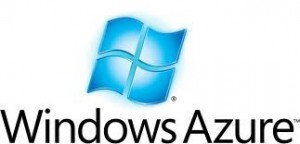I don’t know how many of these emails I’ll send, but my goal is to share some of the resources I’ve found and been using to lab Server 2012. I think there are two ways you can train on this;
1. You have physical hardware you can lab with
2. You can use some hosted or cloud environment
We’ll cover both options, but start with the physical lab approach. For me, I have 3 HP G5s in the basement, with the IVT capability. Basically, you need IVT (Intel Virtualization Technology) or its counterparts to run Hyper-V, which is why I jumped on these servers I have. I also have a stack of desktop type computers that will run server OS.
To me, one of the first steps to consider in a physical lab is how you are going to image or install OS, since you’ll be doing it a lot. I don’t necessarily like sitting around and waiting on DVD’s and CD’s for hours.
The method I have settled on and been using is installing from a USB 2.0 device. USB 2.0 is multiple times faster than DVD or CD. Typically USB will not transfer at the maximum theoretical rates (usually about 50% – 60%). There’s a lot of debate about published vs. actual, so I’m not putting numbers in here. There is also a lot of evidence that the specific USB device can have a lot of impact on the speed. I just bought whatever was around, and it’s been fast enough to me. I’ve been using the USB boot and install tools below, and I can install Server 2012 to a G5 in 20 minutes.
BOOT AND INSTALL FROM USB
Tools;
You need a tool to create the bootable USB. You will need the tool, plus the .iso for the OS you’re installing.
I use WIN USB MAKER. This link is to a short description, and a download link at the bottom of the article.
I have heard good things about RUFUS. But I have not used it.
There are also a lot more, just Google it to find links.
Then you need the .ISO. Download the Server 2012 RTM .iso here. Choose the .ISO on the left. What does “RTM” mean? “Release to Manufacturer”.
FINAL STEP
Follow the instructions for your USB tool to create the bootable USB. I will ask for the location of the .iso, so it can boot and install the .iso when you’re ready.
Conclusion
With this tool, you will be able to boot to the USB and install the OS, from the USB. It’s very quick. So, if you have a physical box, you’re now prepared to create a bootable USP and quickly install the OS. Don’t worry, if you do NOT have physical boxes, we’ll get into some cloud options in future emails. This can also work with Server 2008 R2, or any other server OS. There are even boot USB tools that will create a menu with multiple OS options available on a single USB. So, although I HATE USB drives at work (shouldn’t have them at work) for this purpose they provide a great solution.
NEXT NEWSLETTER (#3)
· Free eBook on Server 2012 (no physical books are out yet)
· Training
NEXT NEWSLETTER (#4)
· Cloud options
· Azure
NEXT NEWSLETTER (#4)
· Storage Craft (imaging / Bare Metal Back) for Labbing
· Misc., anything new
Q and A?
Email me any questions or requests. I will have all of these on a blog this week. I also TWEET on IT topics, Server, SQL, Big Data, Datacenter, etc.
Do I like Server 2012? Yes, I love it.
How long does it take to patch the default install? Just minutes, I only had 1 follow-up patch.

Leave a Reply